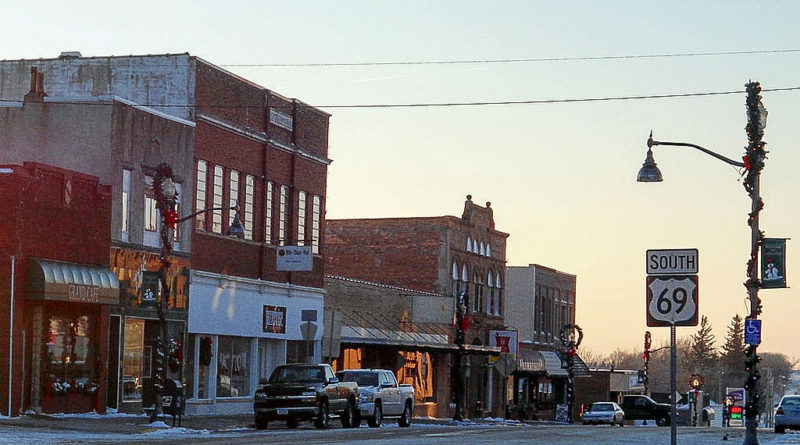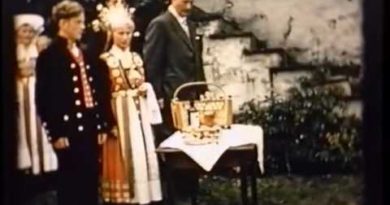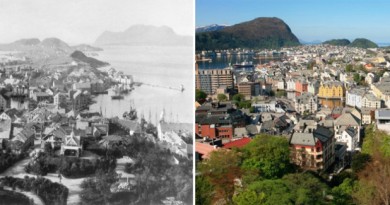Lake Mills, Iowa’s own Nissedal
We take a look at this town’s very Norwegian origins.
By Jim Dietz-Kilen
Featured photo of the main street in Lake Mills by Brandonrush [CC BY-SA]
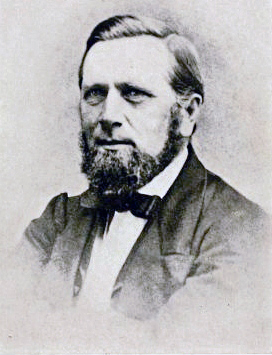
Last year was the sesquicentennial year for Lake Mills, a town that straddles the south side of Iowa’s border with Minnesota. incorporated in 1869 by a handful of Yankees (native-born Americans from the east), the story that would count to define the town actually began 26 years earlier in Norway. In 1843, a young Dane named Claus I.auritz Clausen traveled to Christiana (now Oslo), hoping to join a mission trip to Africa. There, C.L. (as he was more commonly known) met Tollif O. Bache, a wealthy merchant whose son was in America. Bache told Clausen of the nascent settlement of Muskego, Wis, which his son reported was in dire need of a teacher. This provided Clausen a new calling, and he set sail with 20 Nissedalers—the first group to emigrate from that part of Norway.
The settlement at Muskego, 15 miles southwest of Milwaukee, was about 4 years old. It would become a common way station for those wishing to push on farther west to Iowa or Minnesota.
Clausen was a talented and inspirational orator, whose lessons drew heavily on Lutheran doctrine, and it did not take long for the settlers in Muskego to ask him to become their pastor. Clausen found a German Lutheran minister, Rev. Krause, to ordain him, and on Oct. 13, 1343, he began conducting the first Norwegian Lutheran church services in the United States.
When most of the land around Muskego had been claimed, Clausen began scouting for a new home for his flock. This followed a familiar pattern‘ as described in Øyvind T. Gullisen’s preface to So close to Each Other, a collection of “Amerikabrev” (America letters) sent from the Midwest between 1850 and 1875 -some from Lake Mills—to family in Norway’s Nissedal Valley. “Many sons of farmers from Telemark did not settle for long at the first place they arrived in Wisconsin. They began first as “ludbrugere” (sharecroppers) Then they bought land for themselves, started as farmers, but often sold out after a short period and moved farther west in the Midwest two or three times. It was always new farmland that tempted them westwards”
In 1853, Clausen, accompanied by about 40 families, established St. Ansgar in northern Iowa. While accounts do not agree on the exact year, it was less than six years later that Pastor Clausen, accompanied by nine of the families from St. Ansgar, pushed on 35 miles west to Lake Mills. This was at least 10 years before the town’s incorporation. The Norwegians who followed—with significant numbers from Nissedal-—soon overwhelmed the Yankees who had incorporated the town.
Like Pastor Clausen, Auver Grovum came to America in 1843 from Nissedal. His farm near Madison, Wis., formed the basis of the Nissedal settlement there and also hosted many who would travel on to form the largest settlement of Nissedalers outside Norway at Lake Mills. Amerikabrev, such as the letters contained in Øyvind Gulliksen’s collection, both reassured and encouraged prospective émigrés, telling of the help and hospitality they had received and promising, “if any of our relatives come later on, then they will gladly find winter quarters with us.” They also boast of the quality of the land found here, saying they “would rather be sharecropping here in America than be the owner of one of the best farms in Norway.” Later Grovum would pack up and move to a farm in Winnebago County, Iowa, not far from Lake Mills.
There are many accounts of how such Amerikabrev was received back home in Norway. Men would travel for multiple days to hear readings of recently received letters to help them decide whether to undertake the grueling voyage. The optimistic accounts in many Amerikabrev helped fuel “America Fever,” which led to a higher percentage of Norway’s population leaving for America than any other country other than Ireland.
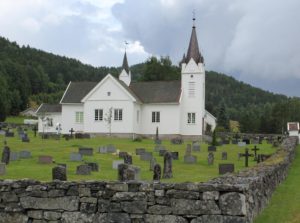
Identification with Nisseda] and with other parts of Telemark represented by the émigrés comprising the early residents of Lake Mills remained strong as late as 1911 when the Iowa Telelag (a gathering of descendants of emigrants from Telemark) was held in town, drawing nearly 4,000 people. Over the next several decades, however, this sense of specific Nissedal or broader Telemark heritage largely dissipated and by 1956, when a publication commemorating the 50th anniversary of the town’s first graduating class was published, biographies of the early settlers identified their birthplaces simply as Norway.
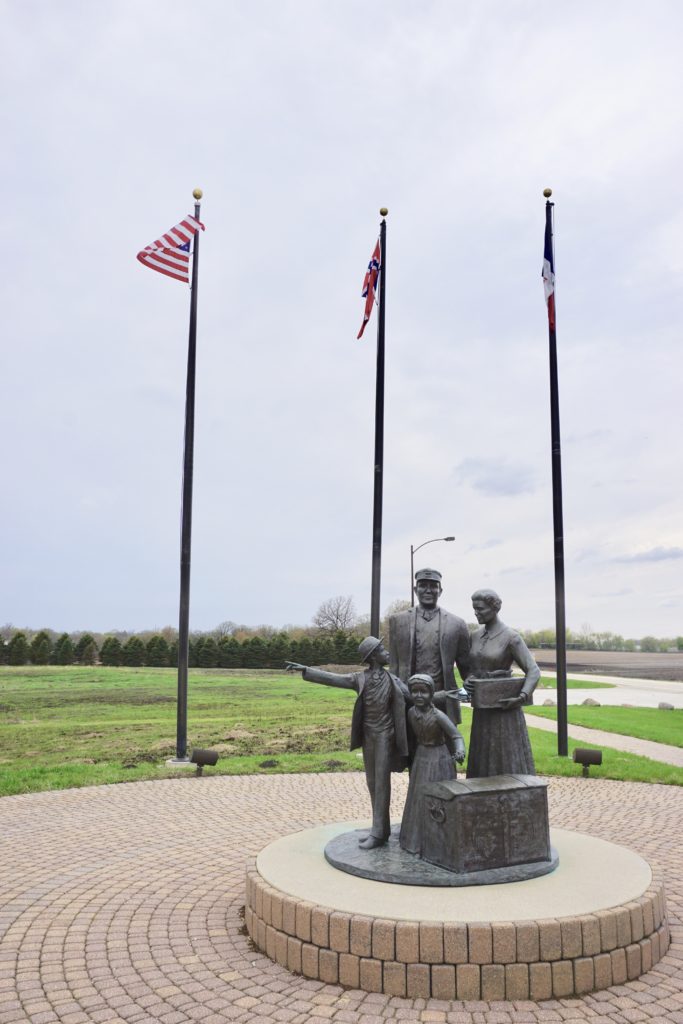
Recent widespread interest in genealogy, however, is leading to the rediscovery, one family at a time, of the specific backgrounds of the Norwegians who were early settlers of Lake Mills. And those who travel to Norway find, in the Nissedal Valley, place names that match the names of the families with whom they grew up in Lake Mills.
The Norwegian American Family Monument, dedicated in 1995, is located on a 6-acre park at the edge of Lake Mills. The life-size bronze sculpture by Clifford Carlson depicts a Norwegian family circa 1860 with their travel trunk, the son pointing to their future in this new land. The flags of the United States, Iowa and Norway fly over the site. The project was funded in part through gifts from more than 50 local families, whose ancestors are memorialized on a plaque at the site
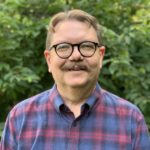
Jim Dietz-Kilen is the chief development officer for Living History Farms, an S00-acre outdoor history museum near Des Moines, Iowa. His great-grandfather and great-great-grandparents emigrated in 1860 from a Nissedal farm, passing through Muskego and settling just south of Lake Mills.
Would you like to share the story of your ancestors? A few words, a picture or two may be all that is needed to convey interesting insight into the history of our ancestors. Go to the contact page and send me a few words and I’ll be happy to publish your story.

